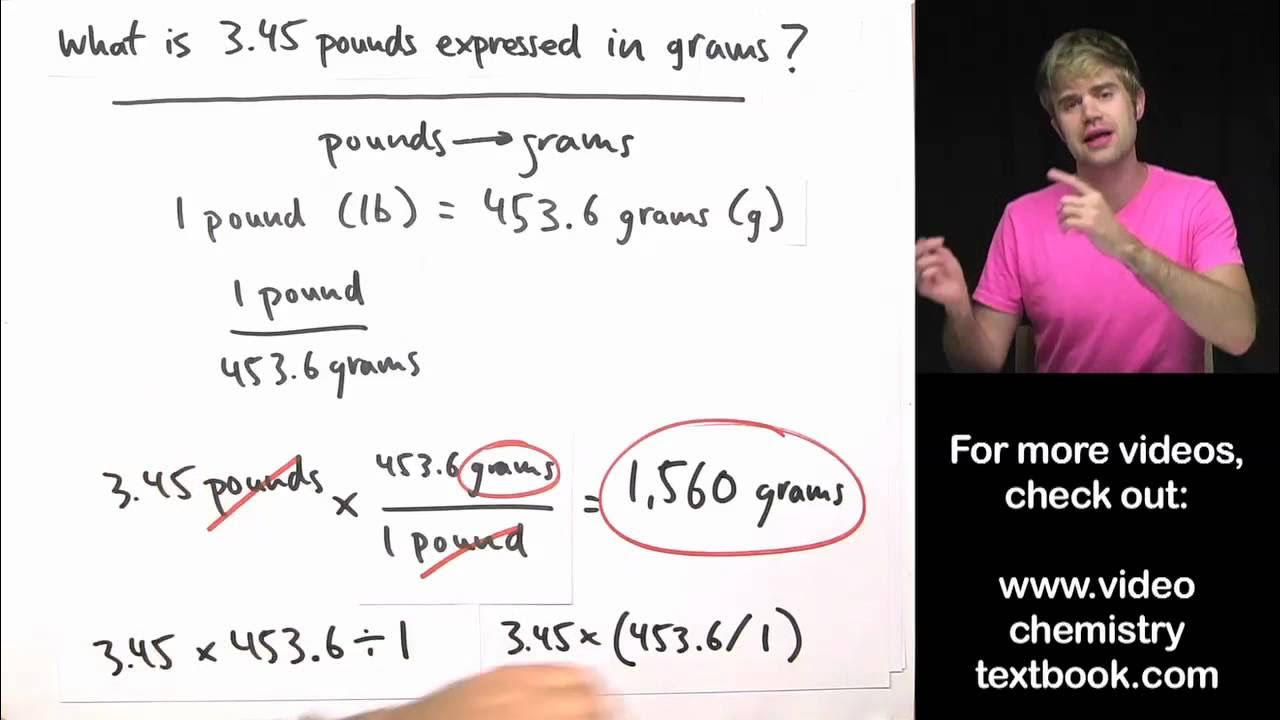Converting Between Grams and Moles
Summary
TLDRThis video teaches how to convert between grams and moles using two methods: the conceptual method and the conversion factor method. The first approach emphasizes understanding the problem and multiplying the number of moles by the molar mass. The second approach involves setting up conversion factors to cancel out units and solve for the desired quantity. Examples using aluminum and sodium chloride illustrate both techniques, showing how to calculate mass from moles and moles from mass, with attention to significant figures. The video helps viewers grasp essential concepts for solving stoichiometry problems.
Takeaways
- 😀 The molar mass of a substance tells you how much one mole weighs in grams.
- 😀 To convert from moles to grams, multiply the number of moles by the molar mass.
- 😀 To convert from grams to moles, divide the mass in grams by the molar mass.
- 😀 The molar mass of aluminum (Al) is 26.98 g/mol, meaning one mole of aluminum weighs 26.98 grams.
- 😀 When solving conversion problems, you can either think through the problem conceptually or use conversion factors.
- 😀 In the conversion factor method, we use the molar mass to set up a ratio that cancels out units.
- 😀 Both the conceptual method and the conversion factor method give the same result for converting moles to grams or vice versa.
- 😀 The molar mass of sodium chloride (NaCl) is 58.4 g/mol, which means one mole of sodium chloride weighs 58.4 grams.
- 😀 When you have grams of a substance and want to find how many moles, divide the mass in grams by the molar mass.
- 😀 Significant figures must be considered when reporting results, especially when performing multiplication or division with measured values.
- 😀 Whether using the conceptual or conversion factor method, the math involved is the same: multiplication or division by the molar mass.
Q & A
What is the main objective of the video?
-The main objective of the video is to explain how to convert between grams (G) and moles using molar mass, and to demonstrate both a conceptual approach and a conversion factor method.
What is the molar mass of aluminum?
-The molar mass of aluminum is 26.98 g per mole, meaning one mole of aluminum weighs 26.98 grams.
How do you calculate the mass of 4.30 moles of aluminum?
-To calculate the mass, multiply the number of moles (4.30) by the molar mass of aluminum (26.98 g/mol), resulting in 116 grams.
What is the conceptual method for solving the problem of converting moles to grams?
-The conceptual method involves multiplying the number of moles by the molar mass of the substance to find the mass in grams. For example, multiply the moles of aluminum by its molar mass.
What is the conversion factor method for solving the problem?
-The conversion factor method involves using a relationship between grams and moles, written as an equivalence (1 mole of aluminum = 26.98 grams). You multiply the given number of moles by the appropriate conversion factor to convert to grams.
What happens when you use a conversion factor like '1 mole of aluminum over 26.98 g of aluminum'?
-Using this conversion factor cancels out the unit of moles, leaving you with the unit of grams, allowing you to convert moles into grams.
What is the molar mass of sodium chloride (NaCl)?
-The molar mass of sodium chloride (NaCl) is 58.44 g per mole, calculated by adding the molar masses of sodium (22.99 g/mol) and chlorine (35.45 g/mol).
How do you determine the number of moles from a given mass of sodium chloride?
-To find the number of moles, divide the given mass (127.5 grams) by the molar mass of sodium chloride (58.4 g/mol). The result is 2.82 moles.
What is the conceptual method for converting grams of sodium chloride to moles?
-The conceptual method involves dividing the given mass of sodium chloride by its molar mass to determine the number of moles. In this case, divide 127.5 grams by 58.4 g/mol.
Why is it important to round the final answers based on significant figures?
-Rounding to the correct number of significant figures ensures that the result is as precise as the given data. For example, if the given data has three significant figures, the result should be rounded to three significant figures.
Outlines

This section is available to paid users only. Please upgrade to access this part.
Upgrade NowMindmap

This section is available to paid users only. Please upgrade to access this part.
Upgrade NowKeywords

This section is available to paid users only. Please upgrade to access this part.
Upgrade NowHighlights

This section is available to paid users only. Please upgrade to access this part.
Upgrade NowTranscripts

This section is available to paid users only. Please upgrade to access this part.
Upgrade Now5.0 / 5 (0 votes)





